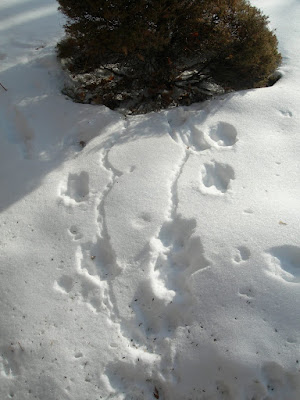
"A joint project of the Cornell Lab of Ornithology and the National Audubon Society, this event is an opportunity for families, students, and people of all ages to discover the wonders of nature in backyards, schoolyards, and local parks, and, at the same time, make an important contribution to conservation. Participants count birds and report their sightings online at www.birdcount.org. ...
"Anyone can take part, from novice bird watchers to experts, by counting birds for as little as 15 minutes (or as long as they wish) on one or more days of the event and reporting their sightings online at www.birdcount.org. Participants can also explore what birds others are finding in their backyards—whether in their own neighborhood or thousands of miles away. Additional online resources include tips to help identify birds, a photo gallery, and special materials for educators.
"The data these “citizen scientists” collect helps researchers understand bird population trends, information that is critical for effective conservation. Their efforts enable everyone to see what would otherwise be impossible: a comprehensive picture of where birds are in late winter and how their numbers and distribution compare with previous years. In 2008, participants submitted more than 85,000 checklists."
Here's how to participate:
1. Plan to count birds for at least 15 minutes on one or more days of the count, February 13–16, 2009. You can count for longer than that if you wish. Count birds in as many places and on as many days as you like—one day, two days, or all four days. Submit a separate checklist for each new day. You can also submit more than one checklist per day if you count in other locations on that day.
2. Count the greatest number of individuals of each species that you see together at any one time. You may find it helpful to print out your regional bird checklist to get an idea of the kinds of birds you're likely to see in your area in February. You could take note of the highest number or each species you see on this checklist.
3. When you're finished, enter your results online. You'll see a button marked "Enter Your Checklists!" on the GBBC home page beginning on the first day of the count (February 13, 2009). It will remain active until the deadline for data submission on March 1, 2009.
The GBBC site offers ample opportunitoes to explore previous years' results, such as a map room, state tallies, and detailed reports of birds spotted in previous counts, including historical results for Northfield. A Top Birds page with photos and sound clips for the 10 most frequently spotted birds in last year's count, as well as the most numerous birds. These two lists overlap by only two species (that's because the most frequently-seen birds don't, in most cases, travel in large flocks).
I certainly hope to participate (it will be my first time), and I encourage you to, too!


















 Now that the holidays are behind us, Mary of
Now that the holidays are behind us, Mary of 
